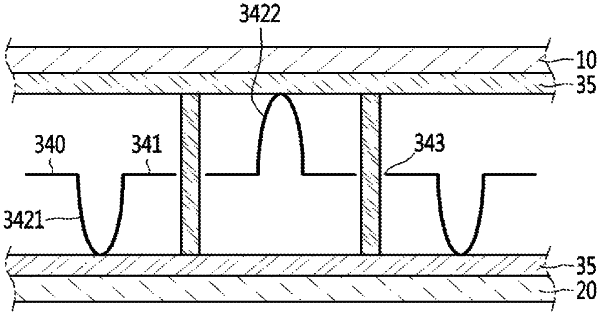| CPC F25D 23/063 (2013.01) [F16L 59/065 (2013.01); F25D 23/06 (2013.01); F25D 2201/14 (2013.01); F25D 2317/043 (2013.01)] | 20 Claims |

|
1. A vacuum adiabatic body, comprising:
a first plate defining at least a portion of a wall for a first space;
a second plate defining at least a portion of a wall for a second space having a second temperature different from a first temperature of the first space;
a sealing that seals the first plate and the second plate to provide a third space having a third temperature between the first temperature and the second temperature, the third space being a vacuum space;
a support plate including a first surface that contacts one of the first plate or the second plate and a second surface opposed to the first surface; and
a heat resistance unit that reduces a heat transfer amount between the first plate and the second plate, wherein the heat resistance unit comprises:
a sheet base provided in a direction crossing the third space to shield heat radiation between the first and second plates; and
at least one sheet protrusion that protrudes from the sheet base in a direction toward the one of the first plate or the second plate to maintain an interval between the sheet base and the support plate, wherein the sheet base and the at least one sheet protrusion are made of a material having a lower emissivity than a material of the first plate or the second plate, wherein the support plate is made of a material having a lower heat transfer coefficient than a material of the first plate or the second plate, and wherein the at least one sheet protrusion includes a peak that contacts the second surface of the support plate.
|